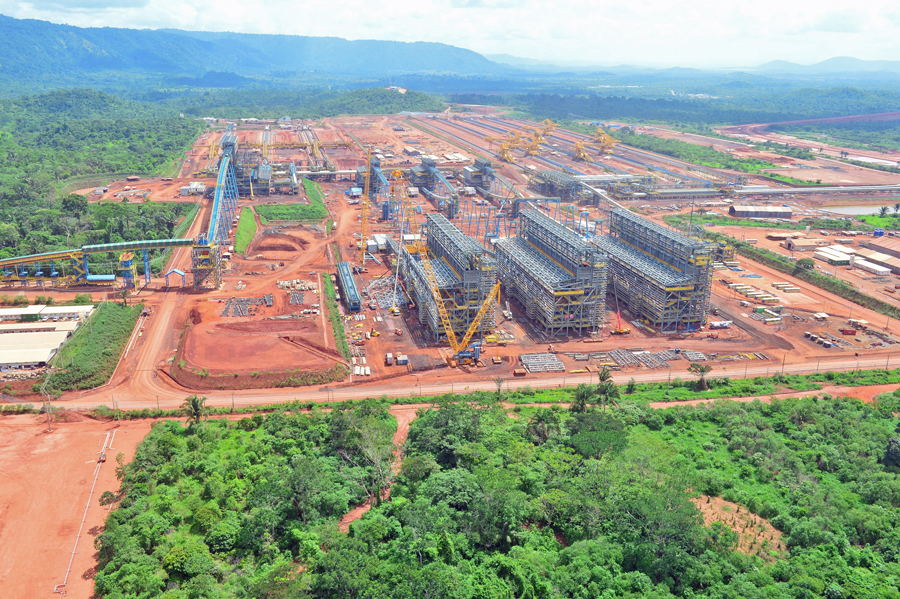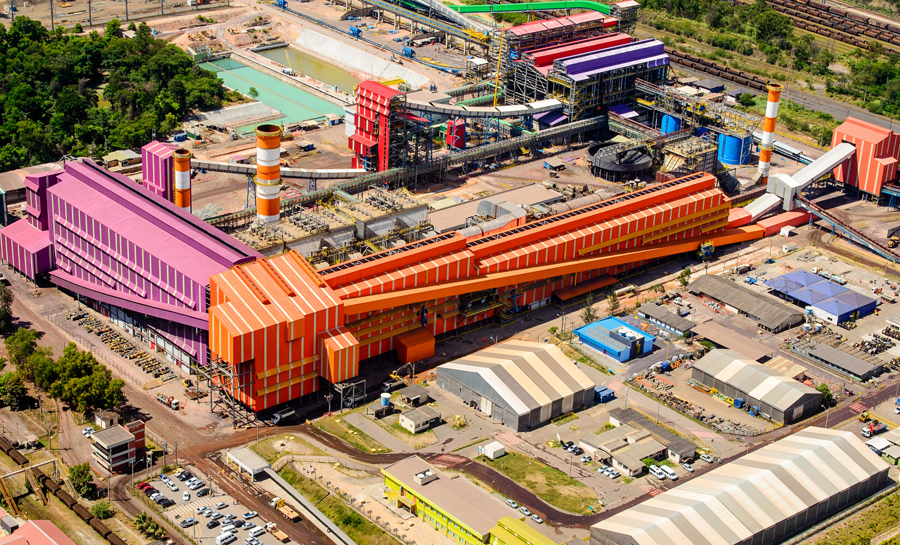
S11D construction in February 2016. Vale in May said the project is 85% complete. Image: Vale
On Friday the Northern China benchmark iron ore price was unchanged at $55.70 per dry metric tonne according to data supplied by The Steel Index. After a steep selloff over the first two weeks of May, the resilience of the 62% Fe CFR Tianjin port assessment has come as a surprise to many industry observers.
While down sharply from its April high of $68.70 as the made-in-China speculative bubble in the steelmaking raw material reached its peak, iron ore is holding onto 50% gains from a more than eight-year low struck mid-December.
This will present some pressure in terms of price, but we’ll be on the left side of the curve
But now top producer Vale, speaking to an annual industry gathering in Singapore, is warning competitors that the rally is unsustainable and according to global director of iron ore marketing and sales Claudio Alves the Brazilian giant is “prepared to operate at any price level” reports Bloomberg:
“We’ll have to prepare for tougher periods. We still see some additional capacity coming into the market.
“This will present some pressure in terms of price […] but we’ll be on the left side of the [cost] curve.”
Vale’s not-so-secret weapon in the current and coming price wars is called S11D. The $17 billion Carajas Serra Sul mine expansion and railway project in northeastern Brazil is 85% complete. According to Alves, S11D may produce between 30 million and 40 million metric tonnes next year and reach 80% of capacity by 2018.
Vale told investors S11D would push the company’s cash costs per tonne to below $10 from the current $12.30
The following year the complex in Pará and Maranhão states should produce at full tilt – that’s more than 90 million tonnes a year. That compares to Rio de Janeiro-based Vale’s overall target of 340–350 million tonnes in 2016.
Last year Vale told investors S11D would push the company’s cash costs per tonne to below $10 from the current $12.30. Another factor in Vale favour are freight rates for dry-bulk carriers which recently fell to a record low.
According to Steel Index data the Brazil–China route adds only $8.30 cost per tonne and implied free-on-board price in Brazil at the moment is a healthy $47.70 a tonne and compares well with Australian FOB prices of $51.45 as of Friday.
Vale’s landed cost in China for fines and pellets is $28 a tonne, not far off its Pilbara competitors. Vale’s recent deal with world number four producer Fortescue Metals adds another competitive edge to the Brazilian giant (the relative underperformance of the real also helps).
According to an estimate by investment bank Jeffries combining Vale’s high Fe-content fines (for which it does not receive enough of a premium at the moment) with FMG’s lower quality ore will add a net $2–$4 a tonne to its value.

Vale pelletizing plant in Vittoria